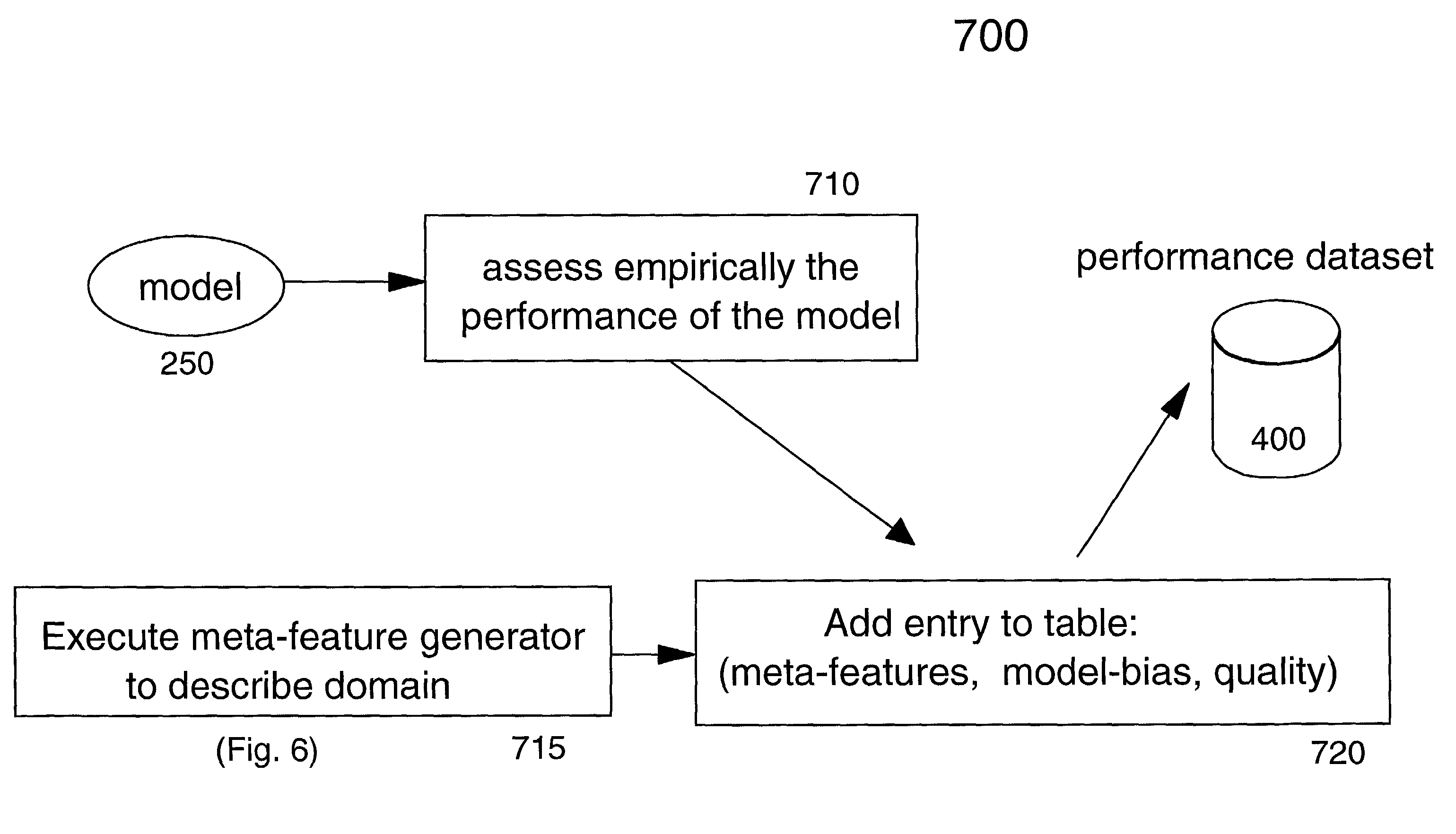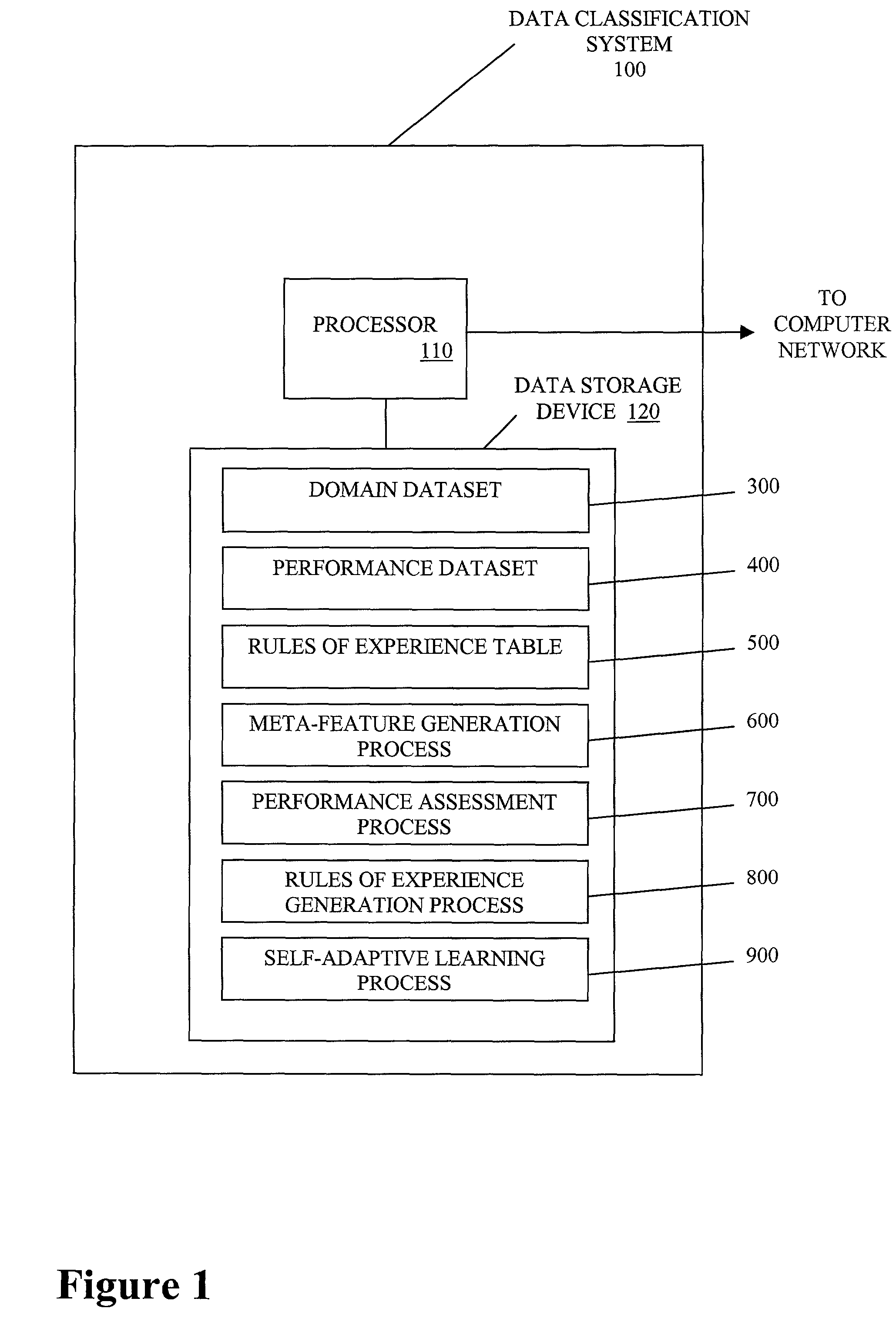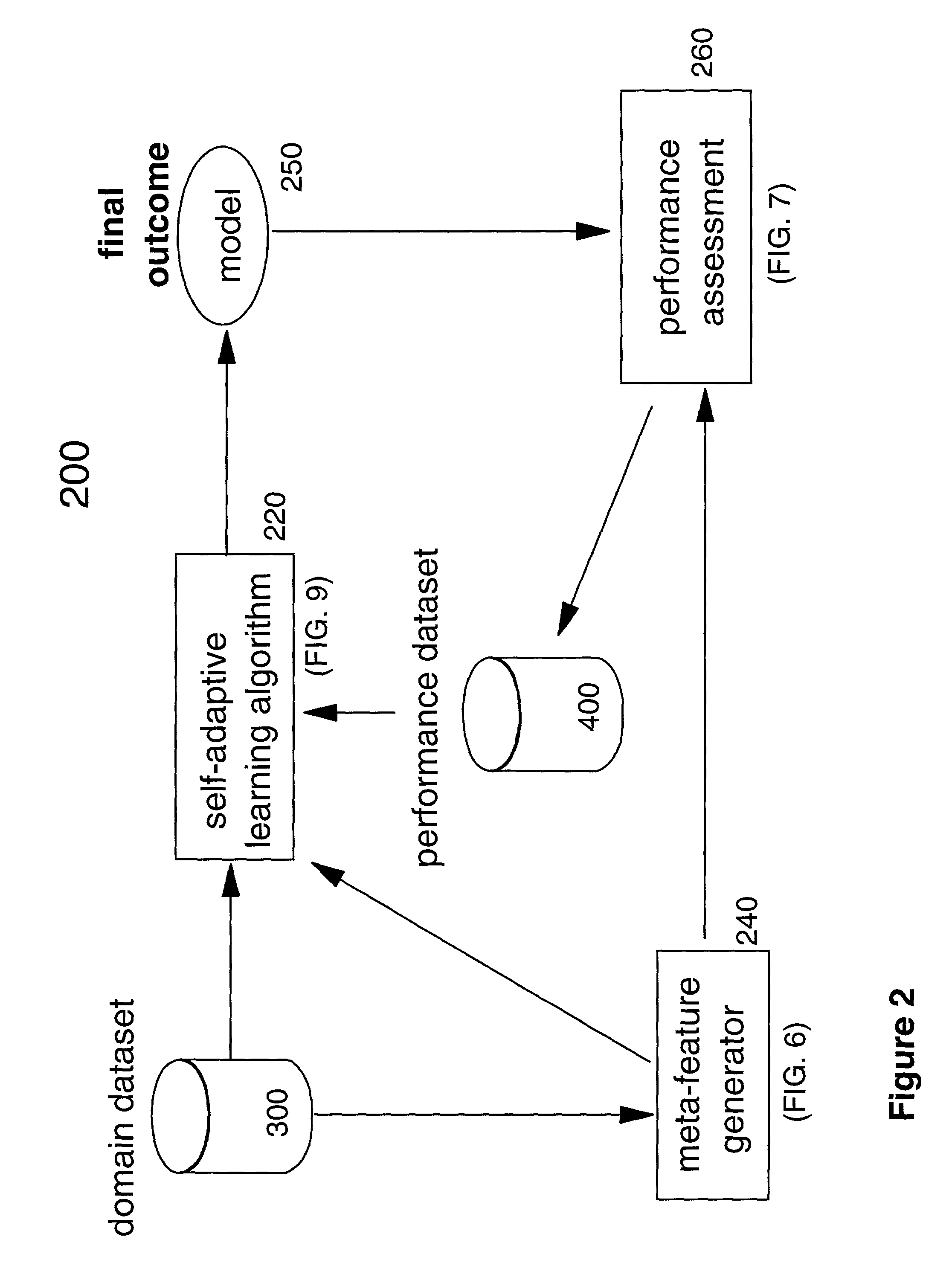Methods and apparatus for generating a data classification model using an adaptive learning algorithm
a learning algorithm and data classification technology, applied in computing models, instruments, electric/magnetic computing, etc., can solve the problems of reducing the quality of other domains, learning algorithms that do not provide a good approximation of targets, and output models that exhibit low accuracy, so as to improve the quality of data classification
- Summary
- Abstract
- Description
- Claims
- Application Information
AI Technical Summary
Benefits of technology
Problems solved by technology
Method used
Image
Examples
Embodiment Construction
FIG. 1 illustrates a data classification system 100 in accordance with the present invention. The data classification system 100 may be embodied as a conventional data classification system, such as the learning program described in J. R. Quinlan, C4.5: Programs for Machine Learning. Morgan Kaufmann Publishers, Inc. Palo Alto, Calif., incorporated by reference herein, as modified in accordance with the features and functions of the present invention to provide an adaptive learning algorithm.
FIG. 1 is a schematic block diagram showing the architecture of an illustrative data classification system 100 in accordance with the present invention. The data classification system 100 may be embodied as a general purpose computing system, such as the general purpose computing system shown in FIG. 1. The data classification system 100 includes a processor 110 and related memory, such as a data storage device 120, which may be distributed or local. The processor 110 may be embodied as a single ...
PUM
 Login to View More
Login to View More Abstract
Description
Claims
Application Information
 Login to View More
Login to View More - R&D
- Intellectual Property
- Life Sciences
- Materials
- Tech Scout
- Unparalleled Data Quality
- Higher Quality Content
- 60% Fewer Hallucinations
Browse by: Latest US Patents, China's latest patents, Technical Efficacy Thesaurus, Application Domain, Technology Topic, Popular Technical Reports.
© 2025 PatSnap. All rights reserved.Legal|Privacy policy|Modern Slavery Act Transparency Statement|Sitemap|About US| Contact US: help@patsnap.com



